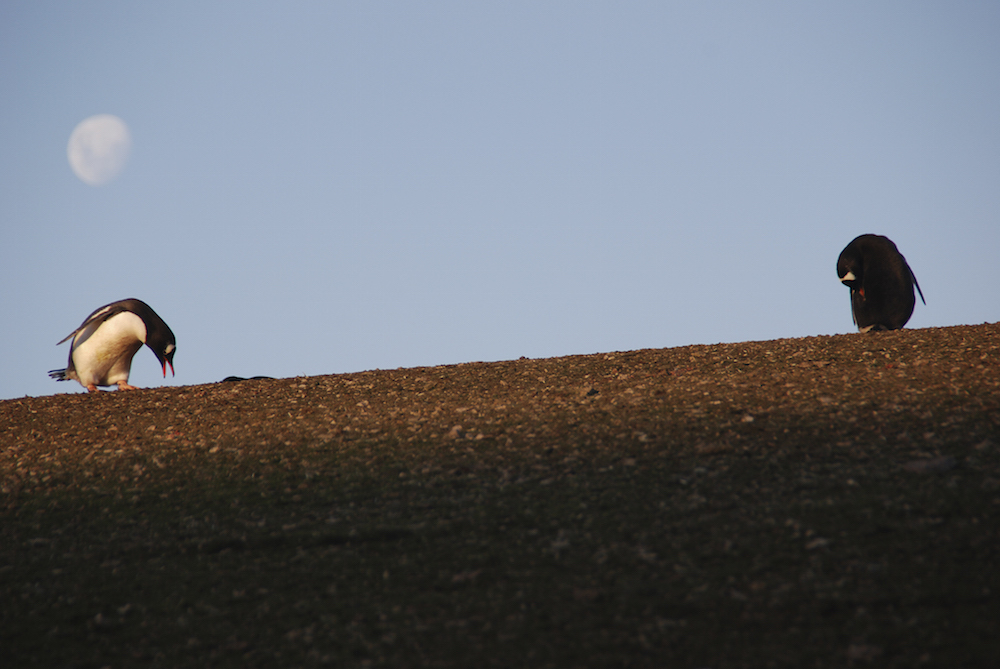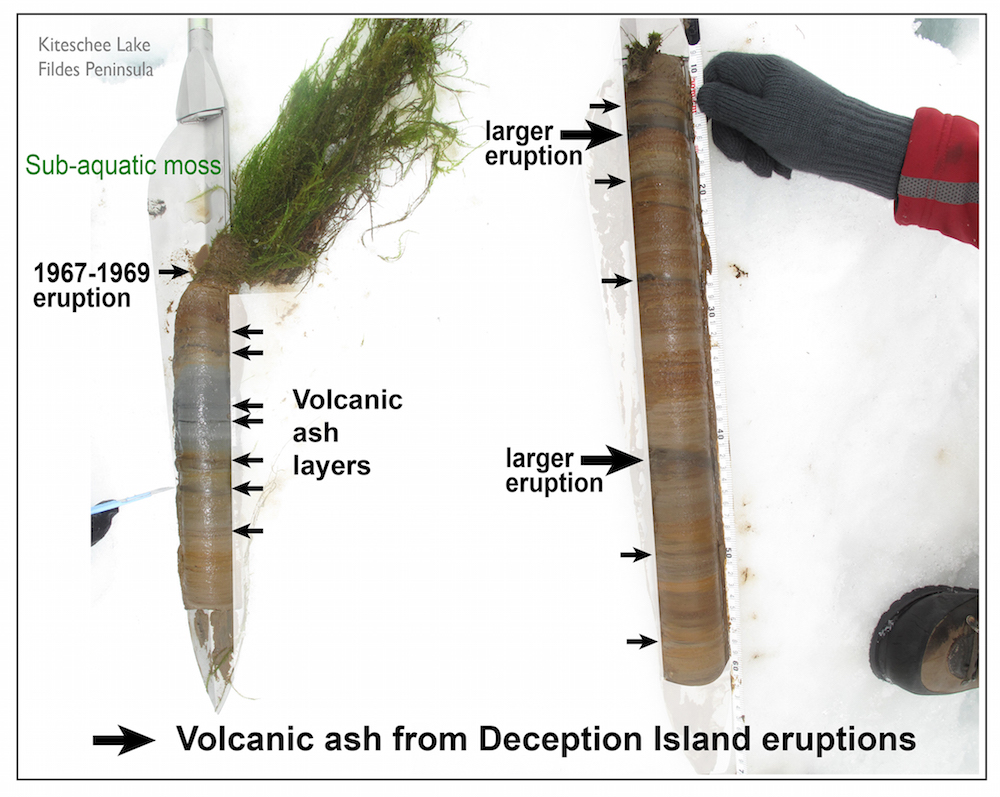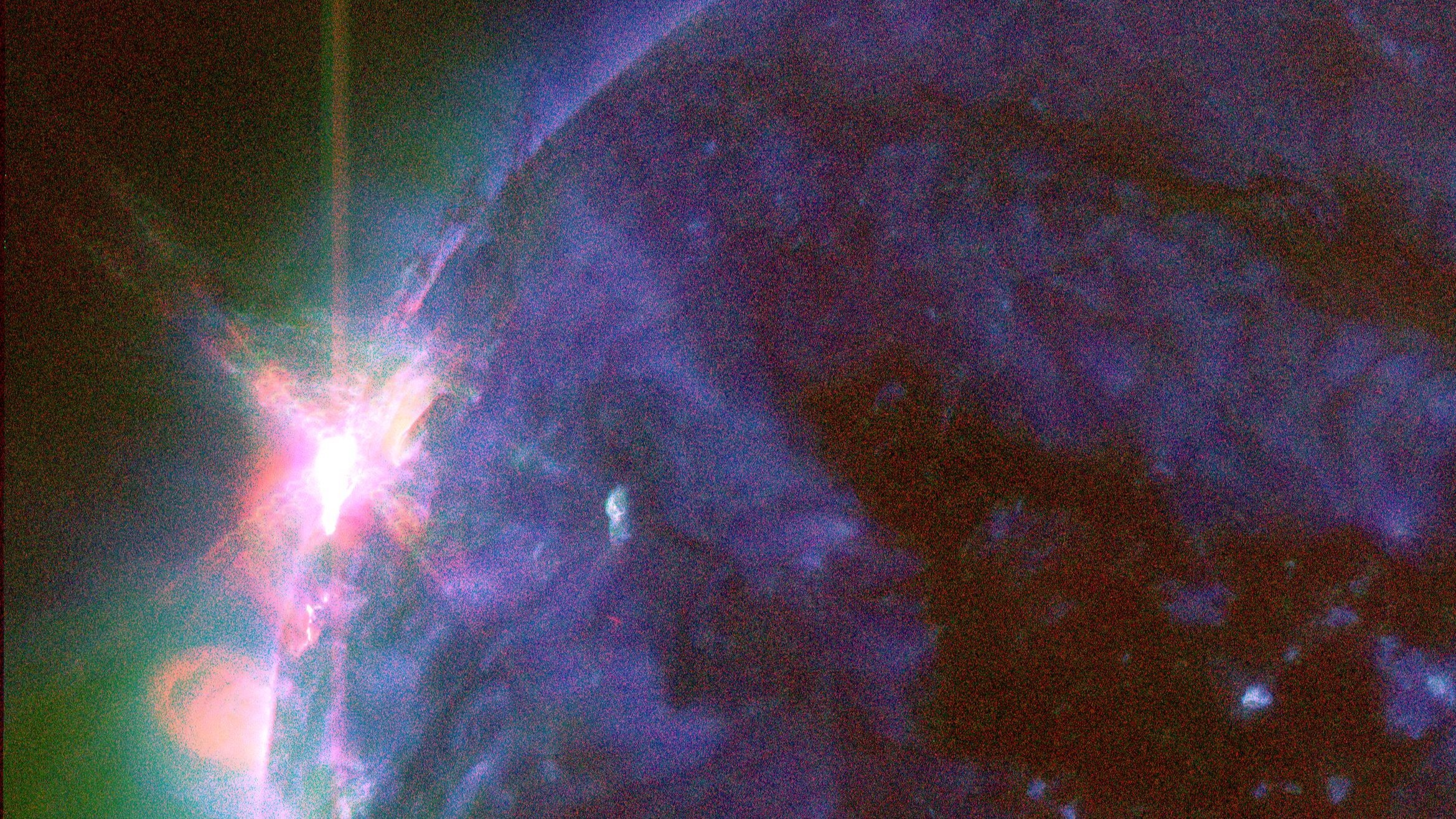Oddly, Penguins Keep Coming Back to Erupting Volcano

It took hundreds of years for one of the oldest and largest penguin colonies in Antarctica to recover after three separate volcanic eruptions nearly wiped the seabird colony off the map, a new study finds.
Researchers made the discovery by examining a sediment core from a lake on Ardley Island, off the northern tip of the Antarctic Peninsula. By analyzing the core's geochemical layers, they were able to gauge how much volcanic ash and guano (bird poop) was present at different time periods throughout history.
The analysis revealed that three massive eruptions — which occurred about 5,300; 4,300; and 3,000 years ago on nearby Deception Island — nearly decimated the population of gentoo penguins (Pygoscelis papua) on Ardley Island. [See Photos of the Gentoo Penguins and Sediment Cores]
It took the colony between 400 and 800 years to recover to full population levels after each eruption, the researchers found.
Accidental finding
The team initially began the study to understand the consequences of climate change along the coastline of western Antarctica, said lead study researcher Stephen Roberts, a quaternary scientist with the British Antarctic Survey. Roberts studies the Quaternary period, which covers two epochs: the Pleistocene (2.6 million to 11,700 years ago) and the Holocene (11,700 years ago to the present).
While analyzing several sediment cores from the South Shetland Islands and the Antarctic Peninsula to gather information about deglaciation and past climate and sea level changes, the scientists noticed one core in particular: an 11.5-foot-long (3.5 meters) sample from Ardley Island. The core, due to the process of new sediment layers being laid down over time, documented a time span dating back 8,500 years.
"[It] had some unusual and interesting changes in geochemistry that were different from those we had seen in other lake sediment cores from the area," Roberts told Live Science in an email. "We also found several penguin bones in the Ardley Lake core."
Get the world’s most fascinating discoveries delivered straight to your inbox.
Intrigued, they studied the core further. Their analyses revealed that the gentoo penguin colony began living on Ardley Island about 7,000 years ago, about 1,000 years earlier than previously thought, Roberts said. Moreover, the penguins — about 5,000 breeding pairs during peak population periods long ago — had generally favorable climate and sea-ice conditions during that time period, except for when the volcano periodically blew up.
Massive eruptions
The volcano's eruptions were enormous, at about a value of at least 3 or 4 on the Volcanic Explosivity Index (VEI), Roberts said. To put that into perspective, the Mount St. Helens eruption in Washington in 1980 had a VEI of 4, "so the level of eruption 'explosivity' is possibly equivalent in scale," Roberts said. (The 1980 Mount St. Helens eruption is considered the most destructive volcanic eruption, economically speaking, in U.S. history, scientists have said.)
The ash from these explosions would have been deadly for the nearby penguin colony. The toxic ash might have killed them outright, either directly by falling on the birds, or indirectly through starvation or habitat disturbance, Roberts said. However, it's possible that some adult penguins swam away and set up camp elsewhere, he said.
In addition, there is evidence — from guano in the sediment core — that some penguins struggled through the catastrophic eruptions and stayed there, Roberts noted.
"Mature individuals on long forages would have the best chance of survival," he said. "If the eruption occurred during [the] breeding season, the chicks and juvenile penguins would be trapped on the island. If parents didn't return from foraging, then the colony could collapse quite quickly." [Images: Adélie Penguins Cope with Changing Sea Ice Conditions]
It's unsurprising that it took the penguins so long to re-establish their colonies, Roberts added.
"Suitable nesting sites and materials to build nests can also be buried, meaning that the island could remain essentially uninhabitable for a long time afterwards," he said.
While the volcano on Deception Island had three violent eruptions during the past 8,500 years, the volcano's eruptions from about 2,000 years ago to the present have been much smaller, Roberts said.
The study was published online today (April 11) in the journal Nature Communications.
Original article on Live Science.

Laura is the managing editor at Live Science. She also runs the archaeology section and the Life's Little Mysteries series. Her work has appeared in The New York Times, Scholastic, Popular Science and Spectrum, a site on autism research. She has won multiple awards from the Society of Professional Journalists and the Washington Newspaper Publishers Association for her reporting at a weekly newspaper near Seattle. Laura holds a bachelor's degree in English literature and psychology from Washington University in St. Louis and a master's degree in science writing from NYU.

